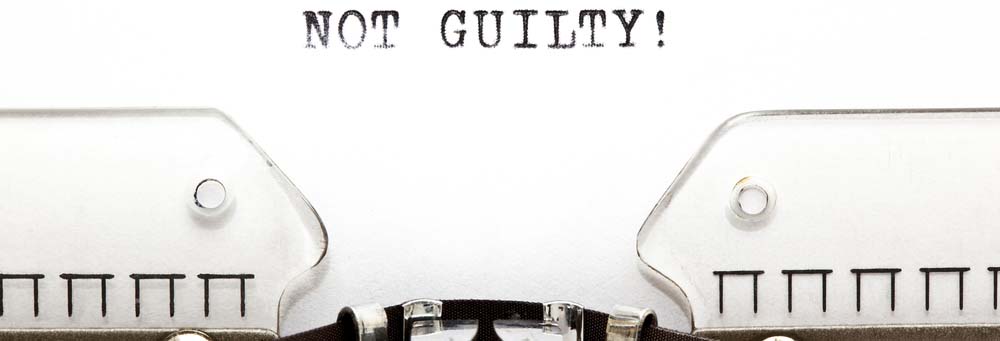Contact Us
KOGARAH OFFICE
Suite 309 – 310, Level 3
13A Montgomery Street
KOGARAH NSW 2217
SYDNEY CITY OFFICE
Ground Floor
54 Martin Place
SYDNEY NSW 2000
Email: solicitors@gmhlegal.com
Phone: (02) 9587 0458
Facsimile: (02) 9587 2936
Assault Offences
Common Assault
In NSW, common assault carries a maximum penalty of 2 years imprisonment. Frequently, individuals are charged where a person assaults another person but does not cause an injury amounting to bodily harm or grievous bodily harm.
In NSW, a court can impose any of the following penalties for a common assault charge.
- Prison sentence
- Periodic detention
- Intensive correction order (previously periodic detention)
- Suspended sentence
- Community service order (CSO)
- Good behaviour bond
- Fine
- Section 10: common assault proven but dismissed
Assault occasioning Actual Bodily Harm
In NSW, a charge of assault occasioning actual bodily harm carries a maximum penalty of five years imprisonment.
The consequences of a conviction can be serious depending upon what you do for a living. Some jobs require you to have no criminal convictions and a conviction for an assault occasioning in actual bodily harm might jeopardise your job or make it difficult to obtain visas for overseas travel. Moreover a conviction for an offence of violence can completely rule out certain career paths, such as teaching and a range of government employment options. Violent offences may also result in sentences that include imprisonment, even where an individual has no previous convictions.
An assault occasioning actual bodily harm is a more serious charge than a common assault charge. It can be further complicated if there are aggravating factors, for example, if the offence was committed in the company of another. It is important to get legal advice at an early stage to ascertain precisely what the consequences of a conviction may be and whether you have a defence to the charge
Reckless wounding
In NSW, reckless wounding carries a maximum penalty of 7 years imprisonment. Where the offence is committed in company with another person, the maximum penalty is 10 years imprisonment. Individuals are charged where a person wounds another person causing actual bodily harm but does not cause an injury amounting to grievous bodily harm.
The offence of Reckless Wounding is found in section 35(4) of the Crimes Act 1900 which states:
A person who:
- wounds any person, and
- is reckless as to causing actual bodily harm to that or any other person, is guilty of an offence.
The maximum penalty is imprisonment for 7 years.
Reckless Grievous Bodily Harm
There are two main things that must be proved beyond a reasonable doubt to satisfy a court that the offence has been committed.
The first thing to look at is whether there is an injury that amounts to Grievous Bodily harm. The law is that the injury must be really serious and includes any permanent or serious disfigurement. Applying this law is not as straightforward as it might seem.
The second aspect that is to be looked at is whether the accused person is reckless as to causing Grievous Bodily Harm. This is the mental aspect which has to do with what the person was thinking at the time of the offence. This is an area of the law that has recently changed. The NSW parliament was quick to step in and amend the law so that all the prosecution now need to prove is that the accused understood that some type of harm could occur. This is a significant change in the law.
Intent to cause Grievous bodily Harm
The Crimes Act defines GBH as ‘any permanent or serious disfiguring of the person, the destruction of a foetus and any grievous bodily disease’. The law requires the injury to be ‘really serious’, but not necessarily permanent, long lasting or life threatening. Whether an injury amounts to GBH is to be determined by the court on a case by case basis.
The prosecution and defence regularly disagree on whether a particular injury actually amounts to GBH or whether it falls within the scope of the less serious charge of assault occasioning actual bodily harm. This issue is then determined by the court.
Some examples of injuries that the court has found to constitute GBH include:
- Brain damage;
- Jaw and skull fractures;
- Infecting someone with HIV;
- Severe lacerations that require a large number of stitches, nerve reconstruction and/or surgery;
- Causing a mother to lose her foetus; and
- Facial fractures and laceration of the right ear requiring steel plates and screws, causing ongoing headaches and continuing treatment.
Causing Grievous Bodily Harm by Negligent or Unlawful Acts
The offence may be proved if GBH resulted from an act that was either:
- Unlawful; or
- Negligent.
An unlawful act is any act against the law. That is, an act that is an offence under legislation or common law. Trivial offences against prohibitions or regulations aren’t included and the act must be a ‘dangerous’ act.
Examples of unlawful acts include:
- Illegal dumping of toxic chemicals into a stream causing serious injury to swimmers;
- Jaywalking and causing a motorist to have a serious accident; and
- Keeping a dangerous animal without a licence and/or proper enclosure which escapes and attacks someone.
A negligent act is an act that falls short of the standard which would be expected of a reasonable person. The act must be done consciously and voluntarily without an intention of causing GBH (otherwise it would be the offence of intentionally inflict GBH).
Examples of negligent acts include:
- Failure to seek medical treatment of a 3 year old girl suffering from a broken arm and large laceration to her forehead. The delay in treatment caused permanent scarring of the face and permanent disfigurement and shortening of her arm;
- A nurse failing to obtain appropriate treatment for her patient after knowing or suspecting that she had incorrectly administered a drug; and
- Throwing methylated spirits from a bottle onto an ignited barbeque, causing an explosion and severe burns.
Call the experienced team at GMH Legal to assist you in your matter.
A free consultation with GMH Legal is an opportunity to gain deep insights into your legal situation and all of your options.
Why Choose GMH Legal?
- Over 60 years of combined legal experience
- Outstanding track record with a winning approach
- First appointment is always free
- Meet our team now.






